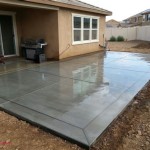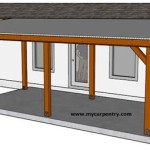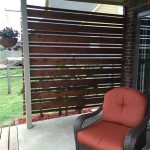```html
A Guide to Concrete Patios in the Columbus, Ohio Area
Concrete patios are a popular choice for homeowners in the Columbus, Ohio area due to their durability, versatility, and relatively low maintenance. A well-designed and properly installed concrete patio can significantly enhance outdoor living spaces, providing an area for relaxation, entertainment, and family gatherings. This guide provides comprehensive information on various aspects of concrete patio construction in the Columbus region, from planning and design to installation and maintenance.
The climate in Columbus, Ohio, poses specific challenges and considerations for concrete patios. Fluctuations in temperature, including freezing and thawing cycles during the winter months, can contribute to cracking and deterioration if the concrete is not adequately prepared and protected. Therefore, understanding local conditions and implementing best practices for concrete installation are crucial for ensuring the longevity and aesthetic appeal of a concrete patio in this region.
Planning and Design Considerations
Before embarking on a concrete patio project, careful planning and design are essential. This phase involves determining the size, shape, location, and intended use of the patio. Consider the overall aesthetic of the home and garden to ensure the patio complements the existing landscape. Furthermore, it is important to assess the soil conditions and drainage patterns of the area where the patio will be constructed.
First, evaluate the intended function of the patio. Will it primarily be used for dining, lounging, entertaining, or a combination of these activities? The answer will heavily influence the size and shape of the patio. For example, a patio intended for outdoor dining will require sufficient space for a table and chairs, as well as room for movement around the seating area. A lounging patio might benefit from a more informal and relaxed design, possibly incorporating curved edges or multiple levels.
Next, consider the location of the patio in relation to the house and surrounding landscape. Ideally, the patio should be easily accessible from the house, perhaps through a sliding glass door or a set of French doors. Orienting the patio to take advantage of natural sunlight and shade can also enhance its usability and comfort. In Columbus, Ohio, it is important to consider the prevailing winds during the summer months when selecting a location. A patio that is shielded from strong winds will be more enjoyable to use.
Soil conditions are another crucial factor to consider during the planning phase. Unstable or poorly draining soil can compromise the integrity of the concrete patio over time. A soil test can determine the load-bearing capacity of the soil and identify any potential drainage issues. In Columbus, Ohio, the soil is often clay-based, which can retain moisture and contribute to frost heave during the winter. Proper soil preparation, including compaction and the addition of gravel or other drainage materials, is essential to mitigate these risks.
Finally, consider the aesthetic design of the patio. Concrete is a versatile material that can be finished in a variety of ways to achieve different looks. Options include stamped concrete, which mimics the appearance of natural stone or brick; colored concrete, which adds visual interest and complements the surrounding landscape; and exposed aggregate concrete, which reveals the natural beauty of the stones and pebbles mixed into the concrete. The choice of finish will depend on personal preference and the overall design aesthetic of the home and garden.
Installation Process
The installation of a concrete patio involves several key steps, each of which must be performed carefully to ensure a durable and aesthetically pleasing result. These steps include site preparation, formwork, concrete mixing and pouring, finishing, and curing. Hiring a qualified and experienced concrete contractor is highly recommended, as they will have the knowledge and expertise to handle each step of the process effectively.
Site preparation is the first and arguably most important step in the installation process. This involves clearing the area of any vegetation, debris, and topsoil. The area should then be excavated to the desired depth, typically four to six inches for a standard patio. After excavation, the soil should be compacted using a plate compactor to provide a stable base for the concrete. In Columbus, Ohio, it is particularly important to ensure proper compaction to minimize the risk of settling and cracking due to the region's freeze-thaw cycles.
Formwork is the process of creating a mold that will contain the concrete while it is poured and cured. The forms are typically made of wood or metal and are carefully aligned to ensure the patio has the desired shape and dimensions. The forms should be securely staked in place to prevent them from shifting during the concrete pouring process. It is important to consider the slope of the patio during the formwork stage to ensure proper drainage. A slight slope of approximately one-quarter inch per foot is typically recommended to prevent water from pooling on the surface of the patio.
Concrete mixing and pouring is a critical step that requires careful attention to detail. The concrete should be mixed according to the manufacturer's instructions and should be of the appropriate strength for the intended use of the patio. A concrete mix with a compressive strength of at least 4,000 psi is generally recommended for patios in the Columbus, Ohio area. The concrete should be poured evenly into the forms and spread using a shovel or rake. It is important to avoid creating air pockets in the concrete, as these can weaken the finished product.
Finishing involves smoothing the surface of the concrete and creating the desired texture. This is typically done using a variety of tools, including floats, trowels, and brooms. The type of finish will depend on the desired aesthetic. A smooth finish is typically achieved using a steel trowel, while a textured finish can be created using a broom or other texturing tools. Stamped concrete requires specialized stamps and tools to create the desired pattern.
Curing is the final and often overlooked step in the concrete patio installation process. Curing involves keeping the concrete moist for several days after it has been poured. This allows the concrete to hydrate properly and achieve its full strength. Curing can be done by covering the concrete with plastic sheeting, spraying it with water, or using a curing compound. In Columbus, Ohio, it is particularly important to cure concrete patios properly to protect them from the damaging effects of freeze-thaw cycles.
Maintenance and Repair
Proper maintenance is essential for extending the lifespan of a concrete patio and preserving its aesthetic appeal. Regular cleaning, sealing, and prompt repair of any damage can prevent minor issues from escalating into more serious problems. Seasonal changes in Columbus, Ohio, necessitate preventative maintenance to safeguard the concrete from weather-related damage.
Cleaning is a fundamental aspect of concrete patio maintenance. The patio should be swept regularly to remove dirt, leaves, and other debris. Periodic washing with a mild detergent and water can also help to remove stains and prevent the buildup of algae and mildew. A pressure washer can be used to clean the patio, but it is important to use a low-pressure setting to avoid damaging the surface of the concrete. Avoid using harsh chemicals or abrasive cleaners, as these can damage the concrete and alter its color.
Sealing is another important maintenance task that can protect the concrete from water damage, stains, and other contaminants. A concrete sealer creates a protective barrier on the surface of the concrete, preventing water and other liquids from penetrating the pores. Sealers should be applied every one to three years, depending on the type of sealer and the amount of traffic the patio receives. Choose a sealer that is appropriate for the climate in Columbus, Ohio, and that is designed to protect against freeze-thaw damage. Apply the sealer according to the manufacturer's instructions, ensuring that the concrete is clean and dry before application.
Repairing cracks and other damage promptly is crucial for preventing further deterioration of the concrete patio. Small cracks can often be repaired using a concrete patching compound. Larger cracks may require more extensive repairs, such as filling the crack with a concrete sealant or epoxy. If the damage is severe, it may be necessary to replace the affected section of the patio. In Columbus, Ohio, it is important to address cracks and other damage promptly, as the freeze-thaw cycles can exacerbate these problems and lead to more extensive damage.
In addition to regular cleaning, sealing, and repair, there are other steps that can be taken to protect a concrete patio. Avoid using de-icing salts on the patio during the winter, as these can damage the concrete. Instead, use a sand or gravel to provide traction. Protect the patio from heavy objects and sharp edges, which can scratch or chip the surface. By following these maintenance tips, homeowners in the Columbus, Ohio area can ensure that their concrete patios remain beautiful and functional for many years to come.
```
A Guide To Installing Proper Base For Your Ohio Paver Patio Columbus Landscape Company

Paver Patios Installation Services In Columbus Oh Outdoor Fx

Columbus Ohio Stamped Concrete Professionals

Columbus Ohio Stamped Concrete Professionals

Paver Patio With Steps Columbus Ohio Suncraft

Concrete Driveway Columbus Ohio The Ultimate Guide

New Custom Patio Transforms This Grove City Oh Backyard

Columbus Ohio Stamped Concrete Professionals

Pouring Concrete General Info Tips Local Contractors

Sam The Concrete Man Columbus Updated May 2024 77 Photos 13 Reviews 3000 E Main St Ohio Masonry Phone Number Yelp
Related Posts








